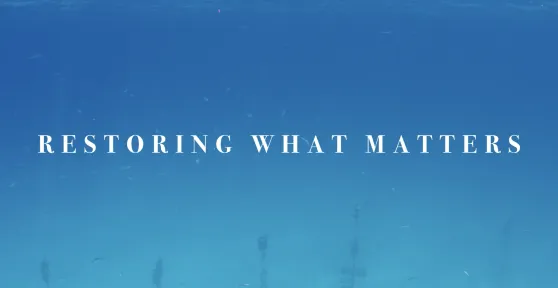The 2025 Global Tipping Points Report must mark a turning point for our planet — a wake-up call that finally turns awareness into action.
The contents of this pivotal report are not surprising. The data confirms what we’ve been seeing and saying for years: Earth’s vital systems are reaching their limits, and coral reefs are now among the first ecosystems to pass a global tipping point — the threshold beyond which their survival becomes increasingly tenuous. This aligns with findings just published in the journal Science, co-authored by Coral Restoration Foundation, which confirm that Acroporids — the elkhorn and staghorn corals once dominant across Florida’s reefs — are now functionally extinct in the wild. But for nearly two decades, Coral Restoration Foundation™ has been building the tools, partnerships, and science needed to meet this moment.
Coral reefs are not just isolated casualties of climate change; they are one of the interconnected life-support systems that sustain human life. Their collapse foreshadows the unravelling of other planetary systems — forests, freshwater, soils, and climate regulation — with profound implications for food security, water supplies, and life as we know it.

This report underscores what those of us working on the front lines of conservation and restoration have known for a long time: the very processes that make life possible are destabilizing faster than policies are evolving, and coral reefs, ice sheets, and the Amazon rainforest are approaching, and in some cases have already crossed, irreversible thresholds. Yet while the findings are alarming, the fact that this science is gaining global attention is a very good thing.
The question is: will it be enough for people to act?
What the Report Says and Why It Matters
Compiled by more than 160 scientists across 87 institutions in 23 countries, and led by the University of Exeter in collaboration with the Stockholm Resilience Centre, the report synthesizes decades of research into a single message:
Our planetary life support systems are starting to hit some serious climate-change induced tipping points. Here’s what it means:
- Coral reefs have already crossed a critical thermal threshold. At the current rate of around 1.2 to 1.4 °C of global warming above pre-industrial levels, warm-water coral reefs are undergoing widespread die-offs. Coral reefs are the first ecosystem on Earth to have passed a planetary-scale tipping point.
- Other systems are close behind. Ice sheets in Greenland and West Antarctica, the Amazon rainforest, and key ocean circulation patterns (like the Atlantic Meridional Overturning Circulation or AMOC) are all on the cusp of abrupt change.
- There is still hope, but only if we act fast. The authors emphasize that “positive tipping points” are also possible but that they require rapid social and technological shifts. We need to urgently invest in the widespread adoption of renewable energy and large-scale ecosystem restoration.
The science is no longer speculative. We are seeing that coral reef systems are already exhibiting tipping dynamics, and we know that the window for adaptation and restoration is narrowing fast.
At CRF, This Isn’t News, It’s The Reality We Live Everyday
The ongoing 2023–2025 global bleaching event – the fourth and most widespread on record — has affected 84% of coral reefs worldwide, according to the International Coral Reef Initiative. NOAA’s Coral Reef Watch data also show that this the most extensive event coral crisis ever recorded.
For Coral Restoration Foundation, this ‘tipping point’ is more than a headline; it’s our daily operational reality.
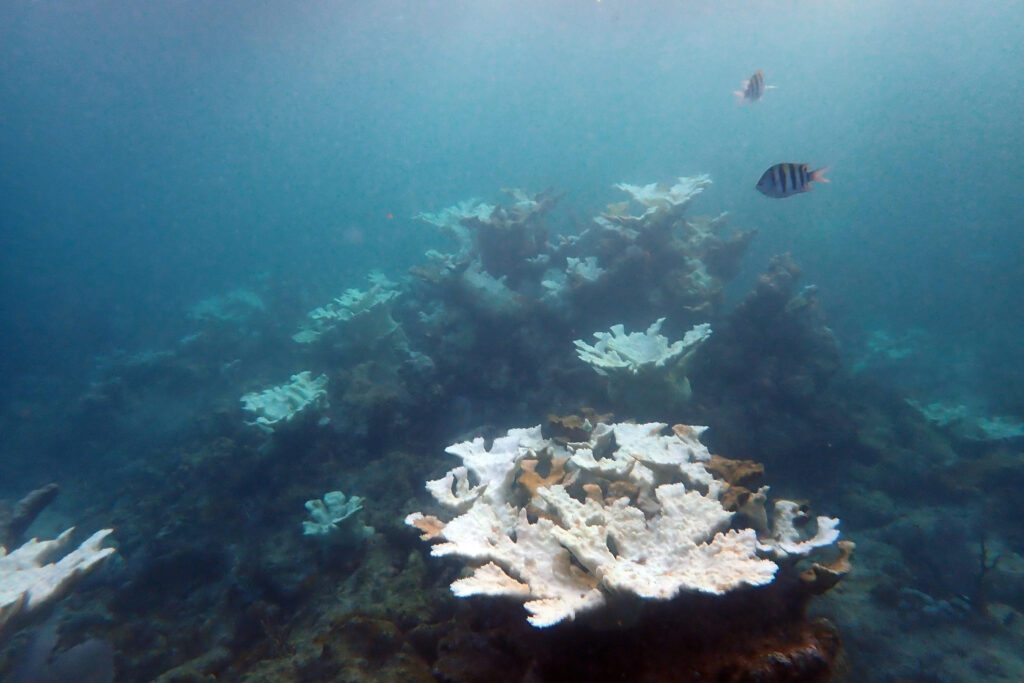
Building Resilience Amid Global Collapse
Our work is not reactive; it has been designed for this era of environmental instability. CRF is built to function as part of the planet’s resilience infrastructure, safeguarding coral diversity while our political, economic, and industrial systems catch up.
1. Gene Banking for the Unknown
Our nurseries are so much more than coral farms; they’re also living gene banks.
At our Tavernier Coral Tree Nursery (the largest open ocean nursery in the world), we care for more than 20 coral species and almost 700 genotypes. These include more than 90 distinct elkhorn coral genotypes, most of which are now extinct in the wild. We also keep replicas of every one of these genotypes in redundant land-based facilities with partners like The Reef Institute.
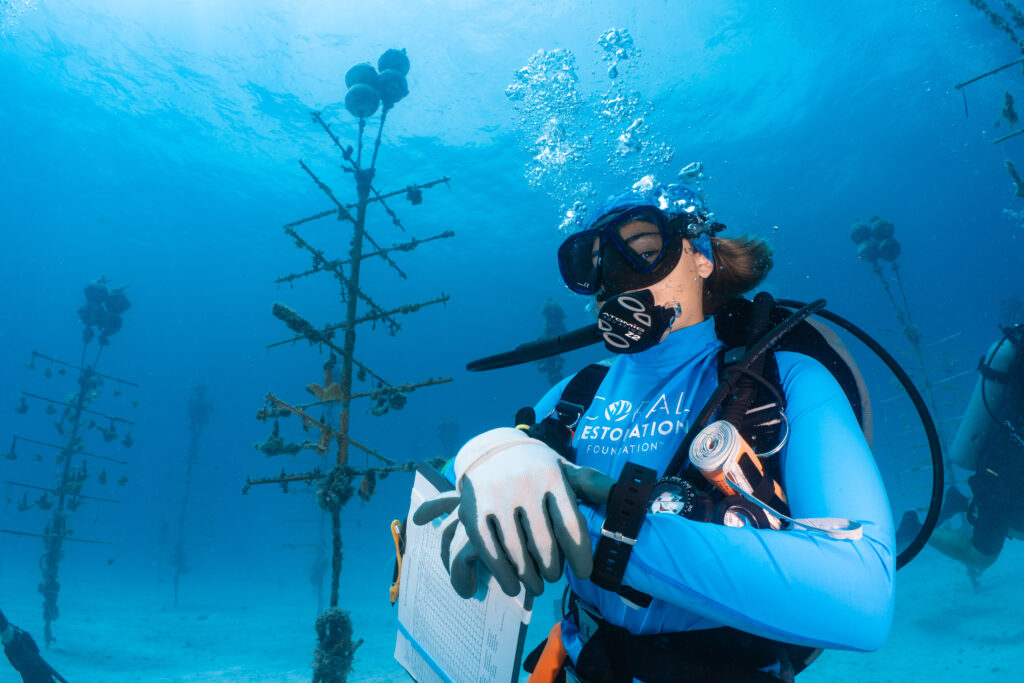
We aren’t chasing a “super coral.” Instead, we’re preserving the widest possible range of genetic diversity, corals that have demonstrated heat tolerance, disease resistance, bleaching recovery, and symbiont flexibility, because no one knows which traits will matter most in the future.
This is our defence against uncertainty and our commitment to the future.
2. Restoration is Buying Time
In this new reality, we know that not every coral we plant will survive for decades. But even short-term survival in the wild is important. Each coral we outplant provides habitat for fish and invertebrates and slows the erosion of the protective barrier that the reef provides.
Without large-scale restoration, Florida’s reefs would already be doomed to a spiral of local extinction. Our work means that they are still functioning ecosystems.
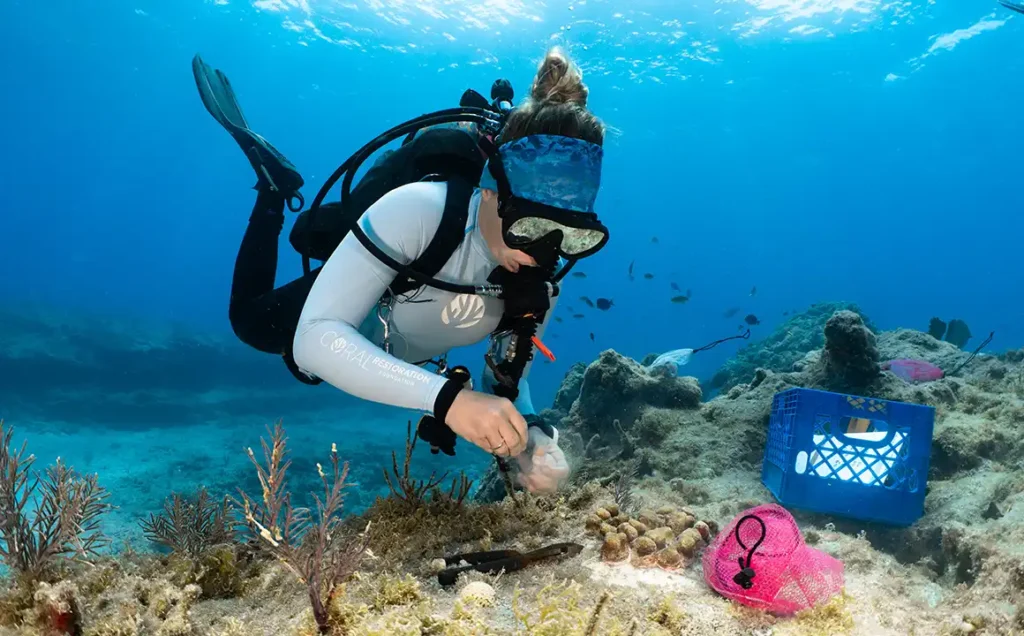
3. Tackling the Threats We Can Control Now
While global warming is driving bleaching, the presence or absence of local stressors can determine whether reefs will die or recover from these bleaching events. Reducing local stress improves the potential for coral recovery, effectively raising their tolerance to temperature.
These are the levers we can pull today:
· Nutrient pollution and sediment runoff
· Overfishing and destructive extraction
· Physical damage from boat anchors and coastal development
· Disease and chemical pollution
Restoration and local management together can create synergistic resilience.
4. People and the Economy of Hope
Coral reefs are the economic and cultural backbone of coastal communities.
Our restoration programs create jobs, train new marine scientists, attract eco-tourism, and generate up to $1.4–$1.6 in local economic activity for every dollar invested. This means that while the ecosystem services provided by reefs begin to decline, coastal communities can support their local economies through ecosystem restoration.

5. Innovation and Global Collaboration
CRF™ is a critical hub for global innovation.
Our nurseries and restoration sites are living laboratories, thanks to which we are developing scalable restoration techniques, advancing restoration science, photogrammetry and AI-driven monitoring, and sharing best practices through the Coral Restoration Consortium.
Every breakthrough we make locally supports reef recovery around the world.

Why This Still Matters and Why We Keep Fighting
The warnings in the tipping point report are clear: it is vital that we work towards a carbon negative future and climate mitigation must accelerate immediately. But while we wait for global policy to catch up with this reality, restoration is an effective tool that we can and must leverage to keep corals alive long enough for climate solutions to take effect.
Coral reefs are one of our planet’s fundamental life support systems. Their health underpins the stability of our oceans, climate, coastlines, and our food supply.
Every coral we plant, every genotype we bank, is a hedge against permanent ecosystem collapse.
Even partial recovery matters: every square meter restored buys time for marine life to adapt.
And every person trained today becomes part of the next generation of ocean stewards.
Coral restoration is not a silver bullet, but without it, we lose our last line of defence.

This is a planetary reality, whatever your political stance. Climate breakdown doesn’t recognize borders, beliefs, or economies. Our ecosystems are not abstract, or “nice to have”, they are vital life support systems that underpin every aspect of human life, from our food and water to our physical security and prosperity.
Saving and restoring coral reefs is not activism; it’s pragmatism on behalf of all life.
A Message from CRF™ CEO, Dr. R. Scott Winters
“We are not reacting to this crisis; we have been preparing for it for a long time. At CRF, we recognized long ago that global bleaching events would outpace policy. Our mission is to safeguard the genetic and ecological backbone of coral reefs so that when climate solutions gain traction, these ecosystems have the capacity to bounce back. This must be a global wake-up call: restoration is not optional, it’s essential if reefs are to endure the Anthropocene.”
— Dr. R. Scott Winters, CEO, CRF™
From Tipping Points to Turning Points
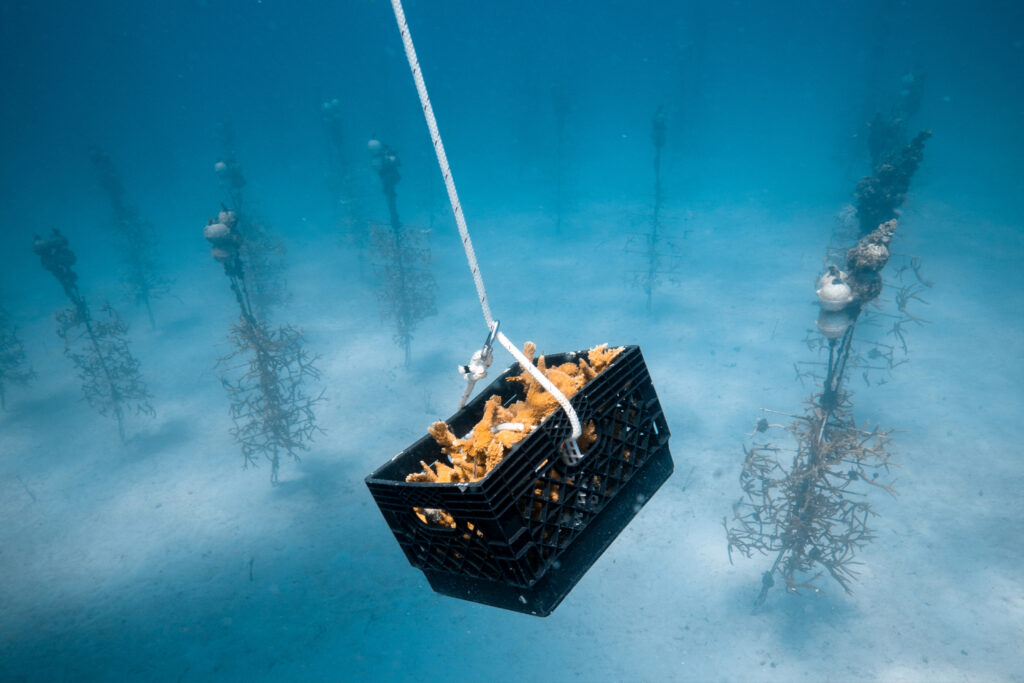
The world may finally be waking up to what we’ve known for a long time: coral reefs are in big trouble. They are also the canary in the coal mine, a stark warning for what’s in store for our planet’s other life support systems unless we decarbonize our economy.
Coral reefs are teetering on the edge of extinction, but they are not beyond saving. If negative tipping points can cascade toward collapse, then positive ones can cascade toward recovery. And every reef we restore, every community we engage, every innovation we share moves us closer to a positive tipping point. This is not about politics — it’s about survival and common sense.
And the future of coral reefs depends on what we do now.
Learn how you can get involved at coralrestoration.org
